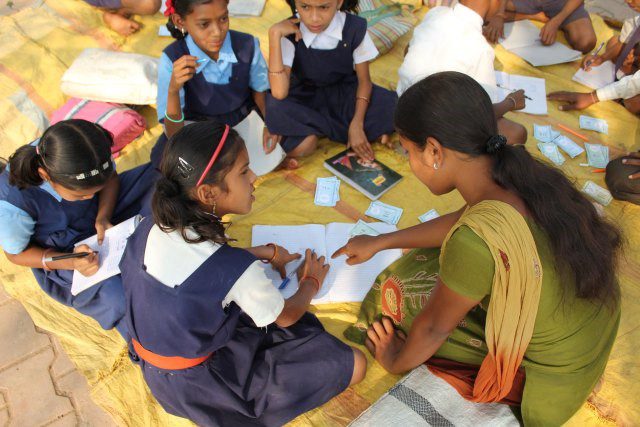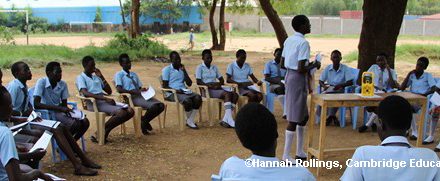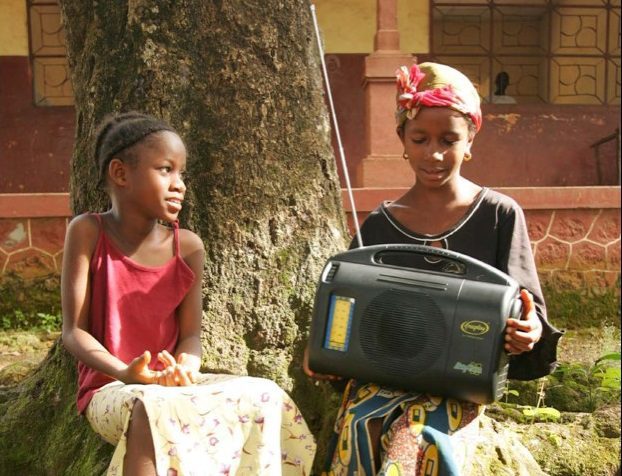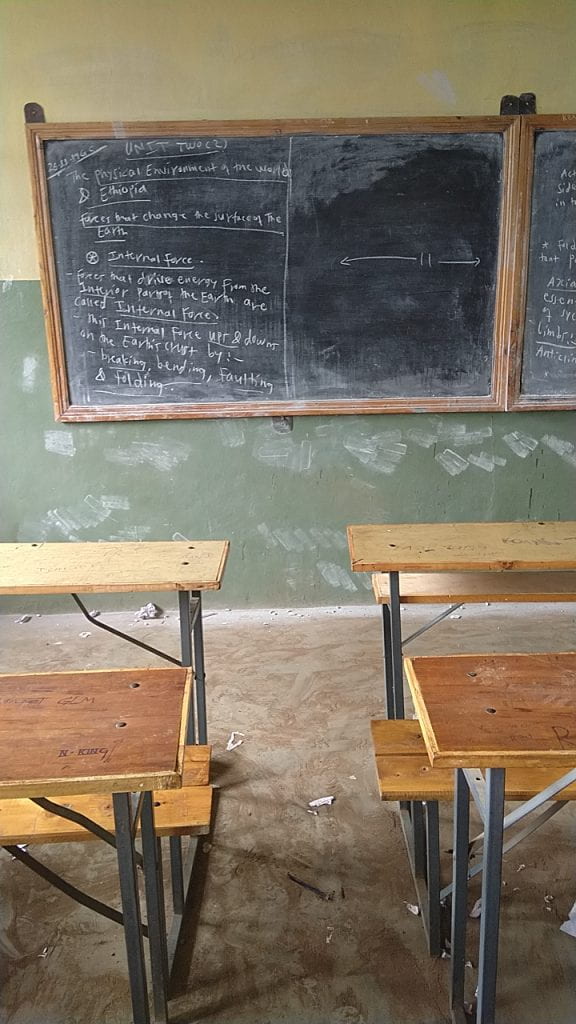This blog was written by Amita Chudgar, Michigan State University. It was published on the Global Education Monitoring Report World Education Blog website on 4 June 2020.
“When the schools reopen, I am going to hug my child’s teacher and thank her…” a friend said to me on the phone just three days into a Covid-19-imposed lockdown. Now several weeks into the Covid-19 crisis, it is no exaggeration that our world has changed in fundamental ways, including perhaps the way in which we view the work of teachers. Are teachers easily replaced by technology? Can anyone become a teacher? I imagine that at least a few amongst us may have changed their perspectives on these debates.
Debates and discussions on teachers and teaching bring together considerations of economics and education like few other educational topics. Teachers are central to education provision, they are the frontline workers, directly entrusted with the responsibility to grow and nurture young minds. Teacher compensation on the other hand is central to educational budgets; in most education systems teacher payroll is the largest yearly expense.
The focus on non-state actors in the forthcoming 2021 Global Education Monitoring Report invites us to engage with the debates on teachers and teaching in the light of growing market-based provision of education. Using the Indian case, I show how non-state actors are shaping teachers’ professional lives in three ways.
Non-state actors are providing teacher training
The private sector plays a prominent role in teacher education in several low- and middle-income countries. By working alongside the government, private institutes can contribute to alleviating the shortage of trained teachers. While the broader impact of non-state teacher training on the profession is under-studied, it can fall dramatically short of expectations, as experiences like the one emerging from India show.
The teacher training sector has been difficult to regulate in India. After recent efforts to overhaul the accreditation process for teacher training institutes, the National Council for Teacher Education (NCTE) now indicates that there are 17,244 ‘recognized’ teacher training institutes across India, offering 17 different types of approved courses. A few clicks on the NCTE website produces a state-wise list of ‘recognized’ institutes, which can be a valuable resource for an aspiring teacher to confirm that they are enrolling in and paying large sums of fees to a legitimate training program. However, with a litany of generic names like ‘Institute of Education and Management’ and ‘C – Impact Institute’ and institutes with similar names and addresses, with minor variation in the spelling (e.g., ‘Springdale Institute’ and ‘Springdala Institute’), navigating these lists can be overwhelming.
As I muddled through a bit trying to better understand how to effectively identify ‘recognized’ institutes, I stumbled upon a small cottage industry of ‘experts’ on YouTube. They offer advice in Hindi and regional Indian languages to future teachers on how to select a teacher training institute while avoiding falling prey to fraudulent and expensive teacher education institutes and degrees.
A few years after the NCTE overhaul, these YouTube commentaries are not the only indication however that all is not well with the private teacher training sector in India. Chapter 5 in the draft 2019 New Education Policy, Chapter 5 notes that ‘…teacher education is severely lacking and indeed in a crisis at the current time. There are approximately 17,000 teacher education institutions in the country, of which over 92% are privately owned. Various in-depth studies…have shown that a large proportion of these teaching colleges are not even attempting to provide a good education; instead, many are functioning as commercial shops where even the minimum curricular or course requirements are not met, and where degrees are essentially available for price.”. The policy document goes on to state that a vast majority of these colleges are ‘stand-alone’, and thus, ‘…generally do not have the capability of providing teacher education that includes…strong pedagogical and practicum training.’
Non-state actors are significant employers of teachers
As non-state education provision at elementary and secondary education level has grown rapidly, private actors have become significant teacher employers, shaping teacher compensation and working conditions. In India alone, between 3-4 million teachers are employed in the private sector. The general consensus is that government teachers receive higher salaries than private school teachers. But beyond salary comparisons, we have limited understanding of teacher working conditions in the non-state sector.
Based on research I am currently working on with Jutaro Sakamoto at Michigan State University, we note that in India, private school teachers are not only likely to earn less but also less likely to have formal job contracts, or receive benefits like paid leave and pension. The implications of these relatively precarious and less desirable working conditions of private-sector teachers are not well-studied. While not entirely applicable, research on government-contract teachers (teachers hired under somewhat similar conditions as private school teachers with lower salary and fewer contractual guarantees or benefits) offers some indication that such a bifurcated teacher labor market may have negative consequences for teacher morale and attrition.
Through Ed-Tech “solutions” non state actors are shaping teachers’ daily work
The Covid-19 crisis has highlighted several inherent inequities in pursuing technology based education solutions. These concerns notwithstanding, through disruptive and magical educational technology innovations that promise to leapfrog educational progress, non-state actors have been busy championing technology-based education solutions at scale. These interventions substitute, augment, modify and redefine educational processes and by extension the daily work of teachers. According to a recent extensive review of nearly 3,000 innovations, NGOs and the private sector are among the largest providers of EdTech innovations, and the private sector and foundations are among the largest funders of these innovations.
Indeed, education technology has the potential to enhance learning, but it is also a lucrative market opportunity. A recent education sector industry report affiliated with the Department of Commerce in India notes, ‘The country has become the second largest market for e-learning after the US. The sector is expected to reach US$ 1.96 billion by 2021 with around 9.5 million users.’ Dr. Francine Menashy in her recent blog drew attention to general concerns stemming from business engagement in education during crisis. Several of these observations are relevant beyond crisis too. Importantly in the context of teachers, these considerations draw our attention to the ways in which we must better understand the potential of education technology interventions, many supported and promoted by non-state actors, to redefine the daily work of teaching.
In summary
Returning to the questions we started with, the Covid-19 crisis has refocused our attention on frontline workers, including teachers, whose skills and labor we can no longer take for granted. Refocusing our attention on teachers requires us to become more attentive to the ways in which non-state actors, with a range of motives and abilities, are influencing teacher preparation, working conditions and teachers’ daily work. Innovative, conscientious and context-sensitive non-state presence in these spaces can complement government efforts. But this outcome is unlikely to be realized without the government fulfilling its role as a provider and a regulator in the education sector. Our current status of knowledge also limits our understanding of the full-impact of non-state actors on teachers’ lives and their potential synergies or conflicts with the public system. The 2021 GEM Report’s focus on non-state actors is a welcome step that will provide the global community a renewed opportunity to explore these understudied questions.





